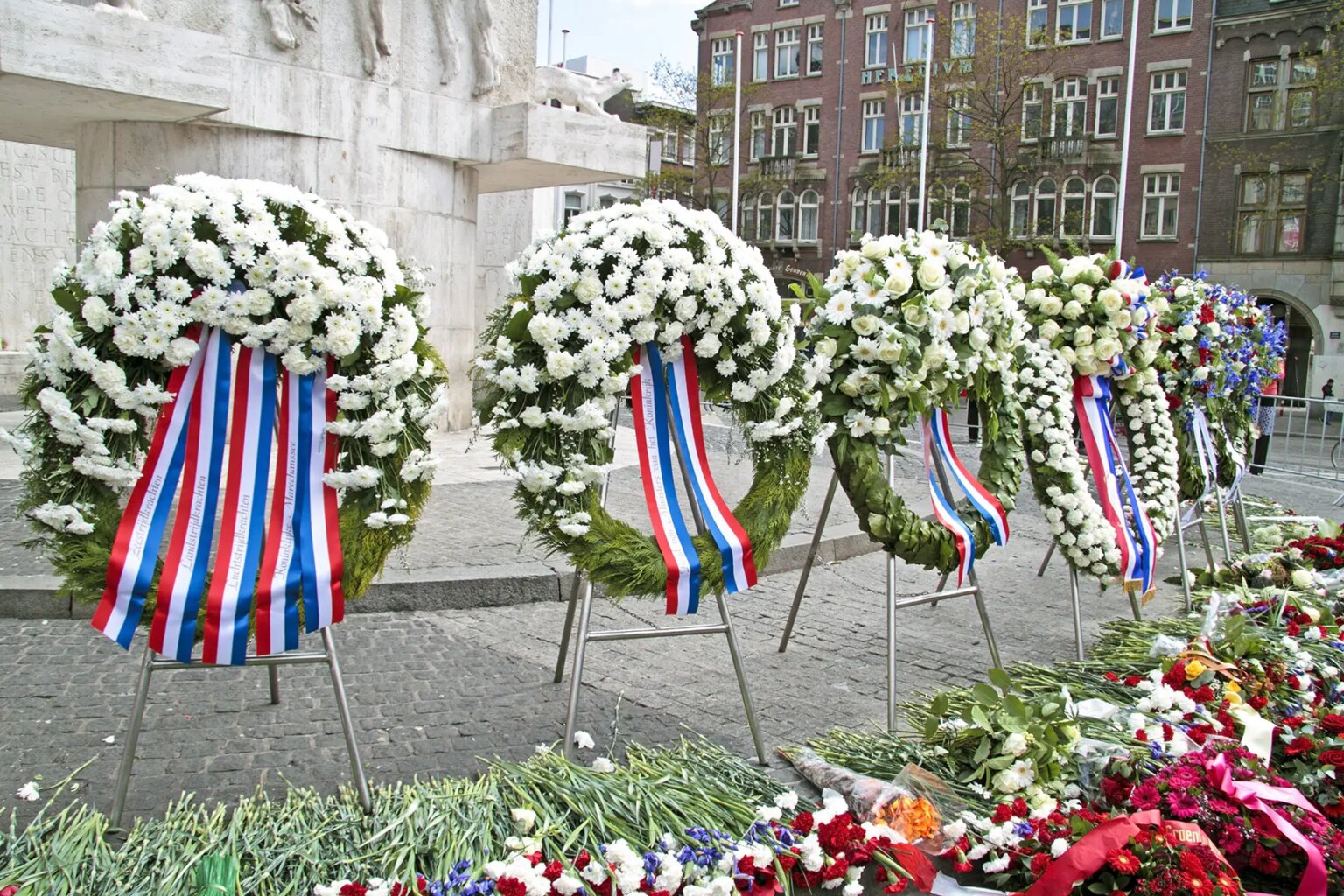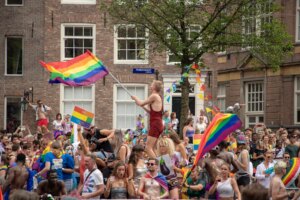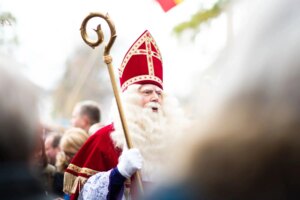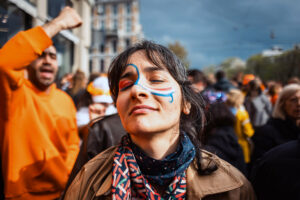May is a significant month in the Dutch calendar. Only a week after the nation celebrates King’s Day (Koningsdag), it turns its attention to the past; more specifically, the end of Nazi Germany’s occupation during WWII. This milestone in history is first marked by Remembrance Day on 4 May and then Liberation Day on 5 May.
Editor's Note
Due to the COVID-19 measures, all major public Remembrance Day events in the Netherlands have been modified. You can still commemorate the occasion by laying a digital flower at a monument or taking part on one of the other special initiatives planned for this year. Read on to find out more about this.
Remembrance Day (4 May)
For the Netherlands, Remembrance Day (Dodenherdenking) is an important date to acknowledge. Across the country, people pay homage to the fallen and those who fought and sacrificed their lives during WWII; as well as all other wars. This includes the 7,900 soldiers, 88,900 civilians, and 106,000 Jewish compatriots who perished during the five years of WWII.
Royal memorial meeting at Dam Square
Local commemoration ceremonies take place in nearly every town and city throughout the Netherlands. Important locations include the Waalsdorpvlakte near The Hague and a war cemetery in Grebbeberg. However, the central ceremony takes place at the National Monument on Dam Square in Amsterdam.
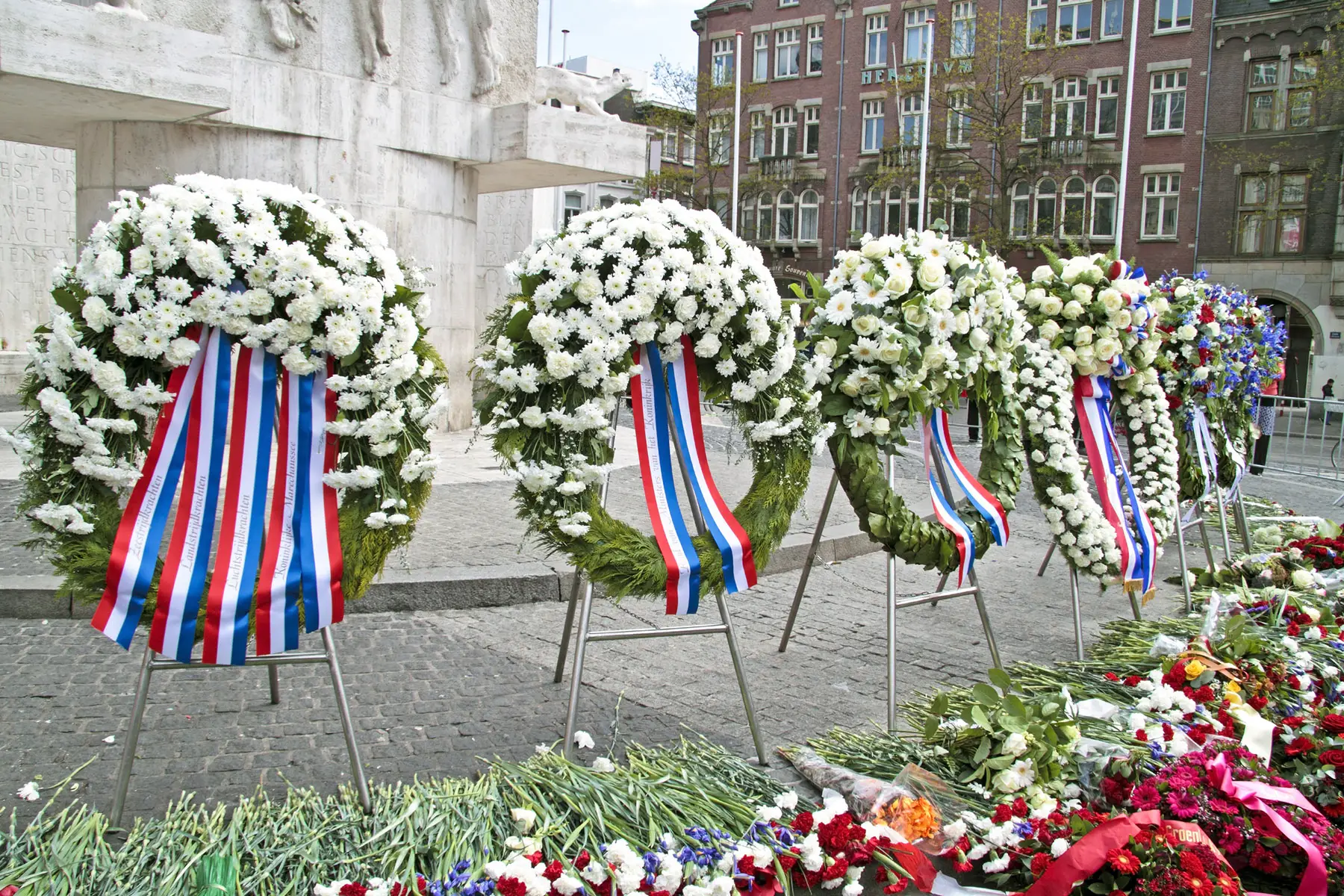
Traditionally, the ceremony on Dam Square is held in the presence of the head of state and various representatives of both the Council of Ministers of the Kingdom of the Netherlands and the Dutch Parliament. On the evening of 4 May, King Willem Alexander and Queen Maxima present at the memorial meeting in De Nieuwe Kerk in Amsterdam. Afterward, they lay the first memorial wreath on the National Monument at De Dam just before the nation falls silent for two minutes at 20:00. At 18:00, the flag also hangs at half-mast until sundown.
Usually, crowds of more than 20,000 people usually gather to witness the ceremony. However, due to the current COVID-19 measures, there will be no crowds at Dam Square this year. Instead, the ceremony will go ahead and will be broadcast on television and radio.
A respected milestone in Dutch history
Remembrance Day remains an important and respected milestone in Dutch history. In fact, an annual survey on Dutch issues in 2017 revealed that around 80% of citizens take part in the two-minute silence and follow the Remembrance Day ceremony on television or radio. It is also a time for national Dutch pride, reflection, and feeling a strong national bond.
Special celebrations for 2021
This year marks 76 years since the atrocities of WWII took place and the nation does not want to let the commemoration go unmarked. In order to prevent the spread of the COVID-19 virus in the Netherlands, this year’s commemoration will, therefore, take place in an adapted form.
4 May walking commemoration in Amsterdam
This year, the Amsterdam 4 and 5 May committee calls for a walking commemoration tour in Amsterdam on 4 May. Using a special walking map, residents of the city can choose their own route of the city’s monuments and listen to one of 26 podcasts that are available on Spotify and Apple. The map is available online and will also be distributed by commemorative committees on 4 May from their own monument or memorial site.

Consisting of 101 maps, plans, and aerial photographs that were made and used during the war, the map features 200 war memorials and 26 podcasts, which discuss occupation, oppression, resistance, and collaboration. These appear on the map at various historical locations. You can visit the official website for more information.
Lay a digital flower at a monument
Once again, the National Committee 4 and 5 May has made it possible to lay a digital flower among the 3,900 war memorial monuments throughout the Netherlands. In this way, everyone can honor the memory of war victims in the area, without actually visiting a monument.
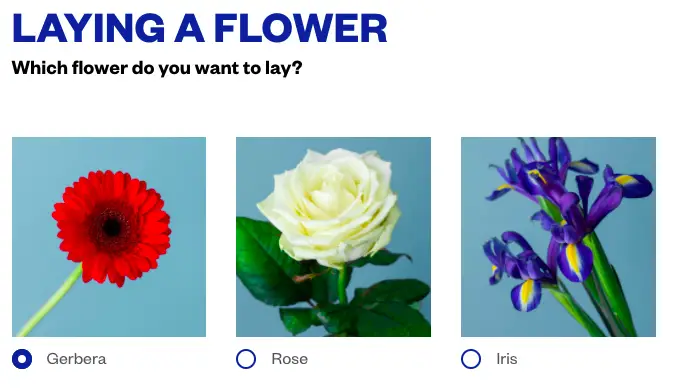
The initiative allows you to select a gerbera, rose, or iris and place it, along with a personal message, at the monument of your choice. All donated flowers will be placed at many war memorials across the country on May 4. You can find out more on the official website.
TV special De Nieuwe Mens
In collaboration with Into The Great Wide Open, Theater Na de Dam, and Vrijheidscolleges, the Amsterdam 4 and 5 May committee is presenting a TV special called De Nieuwe Mens (The New Man). Featuring local artists and performers who practice the art of liberation, the program explores ideas such as equality and the resilience of humanity in times of crisis. Spinvis, Nana Adjoa, Hannah Hoekstra, and Yung Nnelg are just some of the names that join the line-up. The program also features iconic Amsterdam locations such as the A’DAM Toren, the Olympic Stadium, and the GVB ferry to the NDSM wharf. To watch it, tune into NTR, NPO2 Extra at 08:00 on 5 May.
Bevrijdingsdag (5 May)
On the following day, 5 May, the whole country celebrates Liberation Day (Bevrijdingsdag). For the Dutch, this day signifies the end of WWII when German General Blaskowitz signed the surrender of the Nazi occupational forces in the Netherlands in Hotel De Wereld in Wageningen. The First Canadian Army played a major part in liberating the nation. This consisted of Canadian, British, Polish, American, Belgian, Dutch, and Czechoslovakian troops, and in some parts, the British Second Army.
The Liberation Flame
Bevrijdingsdag is a colorful fête where the Dutch celebrate freedom and democracy everywhere. The festivities traditionally start at midnight on 4 May, when a torch is lit in Wageningen. This is where the capitulation documents were signed. A team of 1,300 runners then carry it in relay to other fires all over the country. The Liberation Flame then travels to 200 different municipalities in the Netherlands. In the hours that follow, a colorful range of events takes place across the Netherlands. The Prime Minister traditionally launches these celebrations in a different province each year. However, again, due to the COVID-19 measures, many of these events will not go ahead or will be modified this year. Therefore, be sure to visit the event websites to find the latest updates.
Liberation Festivals
A highlight of the celebrations is the Liberation Festivals which take place all over the country. There were 14 locations in 2019; including Amsterdam, Brabant, Den Haag, Drenthe, Flevoland, Fryslân, Gelderland, Groningen, Haarlem, Limburg, Overijssel, Utrecht, Zeeland, and Zuid-Holland.

The festivals feature extensive musical programs and big-name acts that relate to the theme of freedom. Dutch bands, international musicians, and top DJs take to the stage to perform to hundreds of thousands of spectators. Some of the most popular festivals are Bevrijdingspop (Liberation Pop Festival) in Haarlem and the Liberation Day Festival in Wageningen. Many revelers also flock to Amsterdam’s Museumplein and Den Haag’s Malieveld to delight in the day’s music and festivities. Again, you can check the event websites for updates about this year’s events in light of COVID-19.
Parades and other local celebrations
Other than music festivals, each city has a slew of other Bevrijdingsdag events up their sleeves. These include military parades, debates, street theater performances, festival markets, guided tours, film screenings, and even speed dating events. In various areas of Amsterdam, locals also get together for street dinners. They bring tables outside and have dinner with their neighbors. Several festivals and parades of veterans also take place all over the Netherlands in honor of Bevrijdingsdag. These often give visitors the chance to speak to veterans about their stories and war experiences.
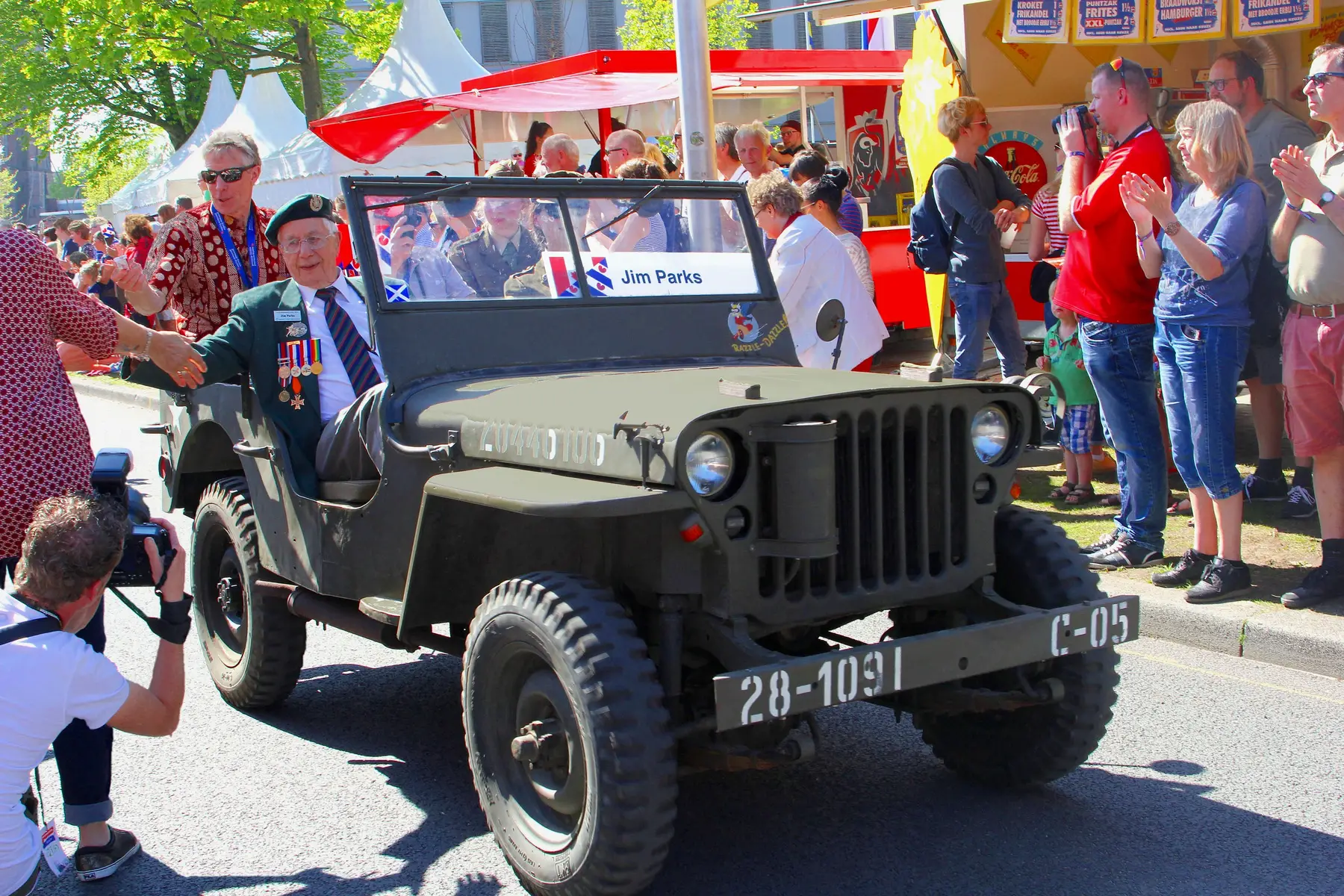
You can visit the official website for Dodenherdenking and Bevrijdingsdag for a complete program of events happening around the country.
